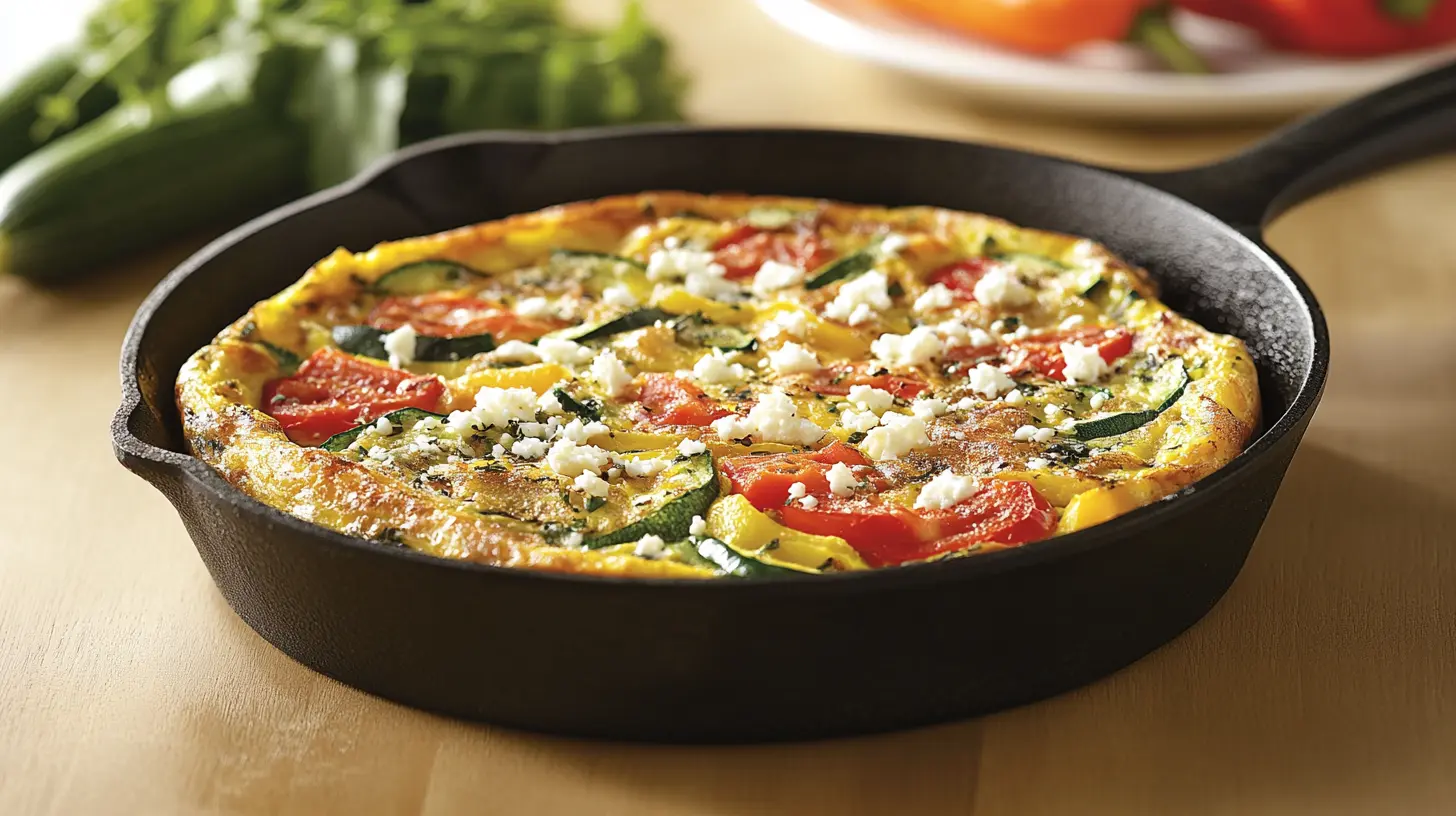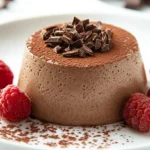Picture this: You’re standing in front of your stove, a sizzling pan filled with eggs, cheese, and a medley of vegetables. You’re excited to dig into a delicious golden frittata, but there’s one problem — how do you know when it’s done? A frittata seems simple enough, but getting it right can be tricky. The key is understanding the subtle signs of how to tell frittata is done, ensuring it’s perfectly cooked, not underdone or overcooked. Knowing when a frittata is done is essential for a flawless meal, whether you’re a seasoned chef or a newbie in the kitchen.
Understanding Frittata Cooking Basics
Before we discuss the signs of a perfectly cooked frittata, let’s take a quick look at what makes this dish so special. A frittata is essentially an Italian-style omelet made with eggs and fillings like vegetables, cheese, or meats, cooked gently until it sets. Unlike an omelet, typically folded over, a frittata is cooked open-faced and often finished in the oven.
While throwing everything together in a pan is easy, achieving the right texture is an art. The egg mixture should be soft and fluffy, with just the right balance between crispy edges and a creamy center. The challenge? The frittata must cook all the way through without overcooking or leaving any raw egg.

Table of Contents
ToggleCommon Signs That a Frittata is Done
Visual Cues: The Role of Color and Texture
One of the first things you’ll notice when checking whether your frittata is done is its color. The edges should be a nice golden brown, while the center should be slightly lighter—think of it as the perfect balance between crispy and creamy. You’re likely in the right zone when you see this golden-brown halo around the edges.
Another key factor is texture. The surface of your frittata should look set, not wet or runny. If you gently shake the pan and the frittata wobbles, it’s likely still undercooked in the center. If it holds its shape and feels firm, then you’re golden (literally and figuratively!).
The Center Test: The Key to Checking Doneness
Here’s a foolproof method: the center test. If the edges are browned but you’re unsure about the center, gently insert a toothpick or a fork into the center of the frittata. When you pull it out, it should come out clean or with just a few moist crumbs. If it comes out with wet egg batter stuck to it, your frittata likely needs a few more minutes of cooking.
In the oven, check for doneness around the 15-minute mark (if you’re baking a small frittata), but keep checking every couple of minutes after that. Depending on the pan size and heat level, a skillet on the stovetop could take 10-12 minutes for the frittata to set fully.

The Jiggle Test: Is It Ready?
Ever wondered if you can just shake your frittata to check if it’s done? The jiggle test is a thing — and it works! When you gently shake your pan, the frittata should jiggle slightly, but it shouldn’t feel sloshy. If the center is still wobbly or liquid, it’s probably not fully cooked.
A little jiggle is normal, meaning the frittata is soft in the middle, but if the whole thing moves like jelly, that’s your cue to keep cooking. Think of it like a mini dance party — if the frittata does a little wiggle, you’re on the right track!
How to Check the Edges for Perfection
The edges of a frittata are often a good indicator of its doneness. When the frittata is done, the edges will pull away slightly from the pan, creating a little gap between the frittata and the sides of the pan. This is a sign that the egg mixture has been set fully and is ready for you to dig in.
Look for a crispy golden brown color on the edges. If the edges are over-browned or burnt, your frittata has likely been cooked too long, and you might have a dry, tough result instead of the fluffy texture you’re aiming for.
Tools and Techniques for Accurate Frittata Cooking
Using a Toothpick or Skewer Test
Are you wondering how to tell if a frittata is done? The toothpick or skewer test is one of the simplest methods. Insert a toothpick or skewer into the center of the frittata—if it comes out clean, your dish is perfectly cooked! This technique is especially useful for oven-baked frittatas, as it lets you check doneness without disturbing the dish. Just poke sparingly to avoid ruining the golden finish.
The Oven vs. Stovetop Debate
Choosing between the oven and stovetop depends on your needs:
- Oven: For evenly cooked frittatas with multiple fillings, the stove is your best bet. Bake at 375°F (190°C) for consistent results.
- Stovetop: If you prefer a quick method and love crispy edges, the stovetop works well. Use medium-low heat and check how to tell if the frittata is done using the toothpick test.
Both methods work great—pick the oven for convenience or the stovetop for speed and texture.
The Role of Temperature: Using a Cooking Thermometer
For a foolproof way to know how to tell if your frittata is done, use a cooking thermometer. The ideal internal temperature is 160°F (71°C), ensuring the eggs are set but still moist. This tool is especially helpful for larger frittatas with lots of fillings, where the center might take longer to cook. A thermometer takes the guesswork out of the process and guarantees perfect results every time.
How Long Does It Take to Cook a Frittata?
Cooking time varies by size and method, but here’s a quick guide:
- Stovetop: Small frittatas (6 inches) take 8-10 minutes, while larger ones need 12-15 minutes.
- Oven: A small frittata cooks in 15-20 minutes at 375°F (190°C), while larger versions require 25-30 minutes.
To determine how to tell if a frittata is done, rely on visual cues, the toothpick test, or a thermometer for accuracy.
Common Problems When Cooking Frittatas and How to Avoid Them
Cooking a frittata might seem simple, but a few common issues can arise. Don’t worry, though! These problems are easy to fix once you know what to look for.
Undercooked Frittata: How to Fix It
One of the most frustrating problems when cooking a frittata is cutting into it and finding that the middle is still runny or raw. It can feel like you’ve done everything right—you followed the recipe, watched the time, and checked the edges—but the center just won’t set.
What went wrong?
- Insufficient cooking time: The most likely culprit is that your frittata didn’t cook long enough, especially if you use a larger pan or more fillings. Larger frittatas need extra time to cook through the center.
- Heat too high: If you’re cooking on the stovetop, the heat might have been too high, causing the edges to cook too fast while the middle remains raw.
How to fix it:
- In the oven: If you’re baking the frittata, simply return it to the oven for a few more minutes. Cover it with foil if the top is browning too quickly. You can test it again using the toothpick method to ensure it’s fully cooked. If the top browns too quickly, cover. Then, using a toothpick,
- Lower the heat to medium-low on the stovetop and cover the pan with a lid. This will allow the frittata to cook more gently, giving it time to set in the center without overcooking the edges. If you’re using a cast-iron skillet, you can also finish it in the oven for a few minutes.
Overcooked Frittata: Prevention Tips
Conversely, you might have experienced the opposite problem—an overcooked frittata. Overcooking is easy because the eggs continue cooking even after you remove the frittata from the heat. If you leave it on too long, it can become dry, rubbery, or even crumbly.
What went wrong?
- Too much heat: If the heat is too high or the frittata has been cooking for too long, it can dry out. Eggs cook quickly, so you don’t want them exposed to direct heat for too long once they’ve set.
- Overbaking: If you’re baking your frittata, overbaking can happen quickly, especially if you have small frittata or thin fillings. The oven retains heat, so the frittata will keep cooking even after you remove it.
How to fix it:
- Lower the heat: To avoid this, always cook your frittata on medium-low heat on the stovetop or at 350°F (175°C) in the oven. Don’t leave it on high heat, as the eggs can overcook.
- Remove it from heat early: When your frittata’s edges are browned and the center is set, remove it from the heat, even if it looks a little “jiggly.” Let the residual heat finish cooking it through.

Tips for Achieving the Perfect Frittata Every Time
Now that you know how to troubleshoot, let’s discuss some pro tips for creating delicious, foolproof frittatas.
Choose the Right Pan for Even Cooking
The pan you use can greatly affect how evenly your frittata cooks. Ideally, you want to use a nonstick skillet or a well-seasoned cast-iron skillet. These pans help the eggs cook evenly and prevent sticking, which makes flipping or removing your frittata much easier.
- Size matters: A 10-12-inch skillet is perfect for a frittata. If your pan is too small, the eggs may cook too quickly and burn, while they may cook unevenly if it is too large.
- Flat bottom: A flat-bottomed pan will help distribute heat evenly, so make sure the surface is wide enough to spread the frittata mixture out evenly.
The pan you use can greatly affect how evenly your frittata cooks. A nonstick skillet or a well-seasoned cast-iron skillet is ideal for preventing sticking and ensuring even heat distribution. If you’re looking for the best pan options for making frittatas, check out this guide on choosing the perfect frittata pan
Don’t Overcrowd Your Frittata with Fillings
Loading your frittata with as many ingredients as possible can be tempting, but less is often more. If you add too many fillings, the eggs can overwhelm the frittata, causing it to cook unevenly. You might have undercooked eggs or soggy spots from too much moisture.
Tip: Use a good ratio of about 2 cups of fillings per 6 eggs. This allows the eggs to be set properly while maintaining a nice balance of flavors.
FAQs About Frittatas: What Every Cook Should Know
1. How is Frittata Different from an Omelette?
Both a frittata and an omelet are egg-based dishes, but the key difference is how they’re cooked. An omelet is cooked quickly on the stovetop and usually folded over with fillings inside. In contrast, a frittata is cooked more slowly, often starting on the stovetop and then finishing in the oven, resulting in a flat, open-faced dish. Frittatas can be loaded with ingredients like vegetables, meats, and cheese, and unlike the individual serving of an omelet, they’re typically cut into slices.
2. What is a Frittata vs Quiche?
A frittata is a crustless, egg-based dish, while a quiche has a pastry crust. Quiches are typically made with a creamy filling of eggs, milk, or cream and various other ingredients, giving them a richer, custard-like texture. Frittatas are lighter and fluffier because they don’t contain cream and have fewer ingredients.
3. How Do You Keep a Frittata from Sticking?
Use a well-seasoned cast-iron or nonstick skillet to prevent a frittata from sticking. Preheat the pan and add a generous amount of butter or oil. Avoid overcrowding with too many fillings, as this can cause sticking.
Conclusion: Mastering the Art of Frittata Cooking
Congratulations! You’re now equipped with everything you need to cook a perfectly done frittata. From identifying doneness signs to troubleshooting common issues and using the right techniques, you can whip up a delicious and visually appealing frittata.
Remember, the secret to a perfect frittata lies in patience, attention to detail, and a little bit of practice. With the tips and tricks in this guide, you can avoid common mistakes and ensure your frittatas come out just right — whether you’re cooking for one or preparing a crowd-pleasing brunch. Enjoy cooking, and don’t forget to have fun with your fillings and flavors!



